
views
At-Home Strategies
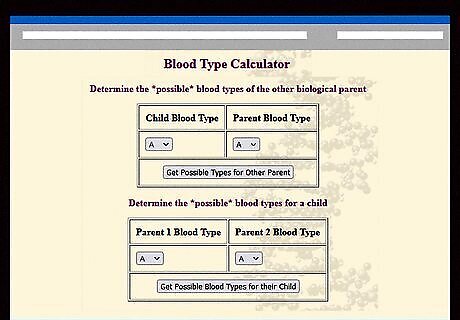
Use Punnett Squares. Ask your biological parents for their blood type. If both your parents know their blood type, you can input their information into Punnett Squares or a blood type calculator to calculate what your blood type might be. While, in most cases, this method will only be enough to guess, knowing’ your parents’ blood types helps narrow down your options to a few distinct possibilities.Figuring Out Your Blood TypeO parent x O parent = O childO parent x A parent = A or O childO parent x B parent = B or O childO parent x AB parent = A or B childA parent x A parent = A or O childA parent x B parent = A, B, AB or O childA parent x AB parent = A, B or AB childB parent x B parent = B or O childB parent x AB parent = A, B or AB childAB parent x AB parent = A, B or AB childBlood types also include an "Rh factor" (+ or -). If both of your parents have an Rh- blood type (such as O- or AB-), you are also Rh-. If one or both of your parents are Rh+, you cannot tell whether you are + or - without a test. The calculator isn't always right. Don't just say immediately "Okay I'm B-" or "That's it, I'm AB+". Punnett squares use alleles to predict the probability of inheriting each of your parents’ blood types. There are 2 types of alleles: the dominant alleles I and I, and the recessive allele i. If your blood type is O, you have an ii genotype. If your blood type is A, your phenotype is either II or Ii. If your blood type is B, your phenotype is either II or Ii. And if your blood type is AB, your phenotype is II

Ask a doctor who has drawn your blood before. If your physician already has your blood type on file, then you just need to call and ask for this information. However, they will only have your record on file if you've already had your blood drawn and/or tested. Common reasons why you may have already had your blood type tested include: pregnancy, surgery, organ donations, and previous blood transfusoins. Knowing your blood type can be extremely helpful in case of an emergency. Should a health crisis happen and you need an immediate blood transfusion, you can save precious time by knowing what blood types are compatible with your own. Our blood types are determined by the sugars and proteins on our bodies called antigens. These antigens determine if we’re type A, B, O, or AB, and they fight off foreign antigens to keep our immune systems healthy. This is why certain blood types are incompatible. The existing blood type’s antigens will create an autoimmune response against them called an ABO incompatibility reaction. Another type of antigen is called the Rh (Rhesus) protein (named after the Rhesus monkey whose blood was tested). Being “Rh positive” means you have this special type of protein on the surface of your red blood cells. It’s estimated that 35% of the population is type O+, 14% is O-, 30% is A+, 8% is A-, 8% is B+, 2% is B-, 2% is AB+, and 1% is AB-.
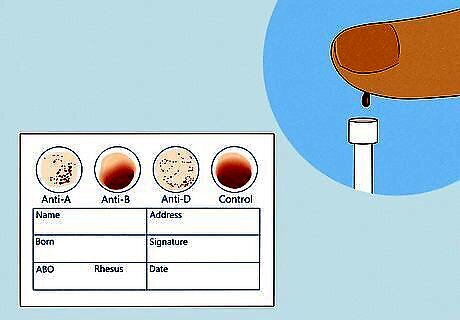
Use a blood typing kit. Skip the hassle of a doctor visit and determine your blood type at home by purchasing a blood typing take-home kit online or from your local pharmacy. To figure out your blood type using these kits, dampen various labeled patches on the kit’s special card. Then, prick your finger and add a little blood to each patch. Note which patches (or vials of fluid, in some kits) cause the blood to clump (agglutinate) instead of spreading out. This clumping is a reaction that can be used to determine your blood type. Once you've completed the test with all cards or fluids, look up your blood type using the kit instructions. Using a Blood Typing KitCheck the "Anti-A" and "Anti-B" patches for clumps: If you have clumps exclusively in the Anti-A patch, it means you have type A blood. If you have clumps exclusively in the Anti-B patch, it means you have type B blood. Clumps in Anti-A and Anti-B patches means you are type AB blood.Check the "Anti-D" patch: Clumps in this patch mean you are Rh positive. If you have a clump in this patch, add a to your blood type. If you have no clumps, add a to your blood type.Clumping in control patch? If the control patch (normal paper) causes clumping, or if you are not sure whether the blood is clumping on any patch, try another card. If you don’t want to draw any blood to determine your blood type, certain websites have kits available that use saliva instead. Keep in mind that any blood test conducted at home is less reliable than a test performed by a professional.
Professional Blood Type Tests
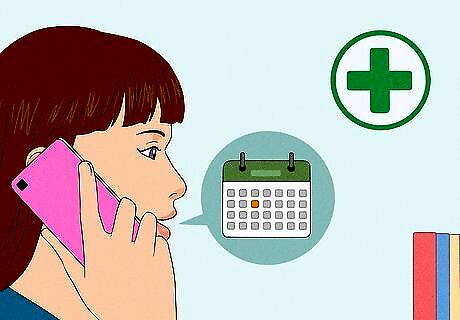
Get a blood test from your doctor. If your doctor doesn't have your blood type on file, you can ask to get a test done. First, call or visit your doctor's office and schedule an appointment for blood work. Check to see if you need to make any preparations for the day of your test (such as avoiding medications or eating/drinking). Then, arrive at your doctor’s office and let the doctor or nurse draw your blood. When you call, try saying something like, "I want to find out what my blood type is. Would it be possible for the doctor to order a blood test to check my blood type?"
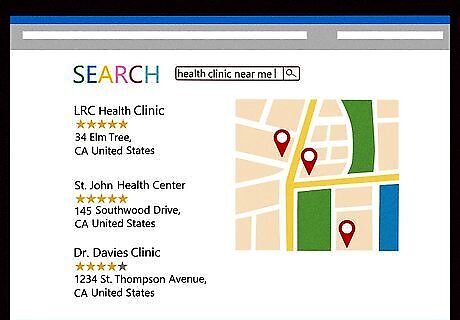
Get a blood test at a health clinic. If you don't have a primary care physician, then you can have a blood test done at a low or no-cost health clinic. Find the contact information of the nearest clinic in your area and schedule an appointment for a blood test. Some clinics even take walk-ins. Call ahead first to see if blood tests are a service that your local health clinic offers.

Donate blood. Give a blood donation to find out your blood type and help other people at the same time! Find a local donation center or wait until your school, church or community center hosts a blood drive. When you go in, ask the staff if they can tell you your blood type.Your blood is typically not tested right away, so it can take up to a few weeks for them to mail or call you with the result.Things to Know Before Donating BloodEligibility requirements: To donate blood, you must be at least 16 years old (in most states), in good health, and you must weigh at least 110 pounds (50 kg). Medications, low iron levels, and recent travel to foreign countries can also disqualify you from donating. You also cannot have donated blood within the last 56 days.Call ahead: Call the blood donation center ahead of time to make sure that you meet these requirements.
Visit a blood service center if you live in Canada. Blood service centers usually provide people with free resources for getting their blood tested and finding out their type. Visit the official Canadian Blood Services website to find out where the next "What's Your Type?" event is taking place. These are regular promotional events hosted in the community. Results are instant and you will find out how common or rare your blood type is, who you can receive from, and who you can donate to. You will learn both your ABO blood group, as well as your positive or negative Rhesus factor.












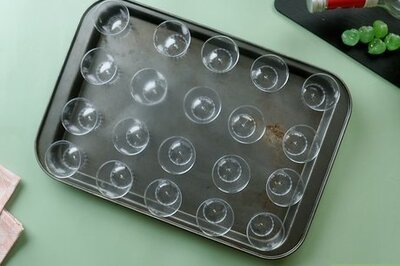





Comments
0 comment